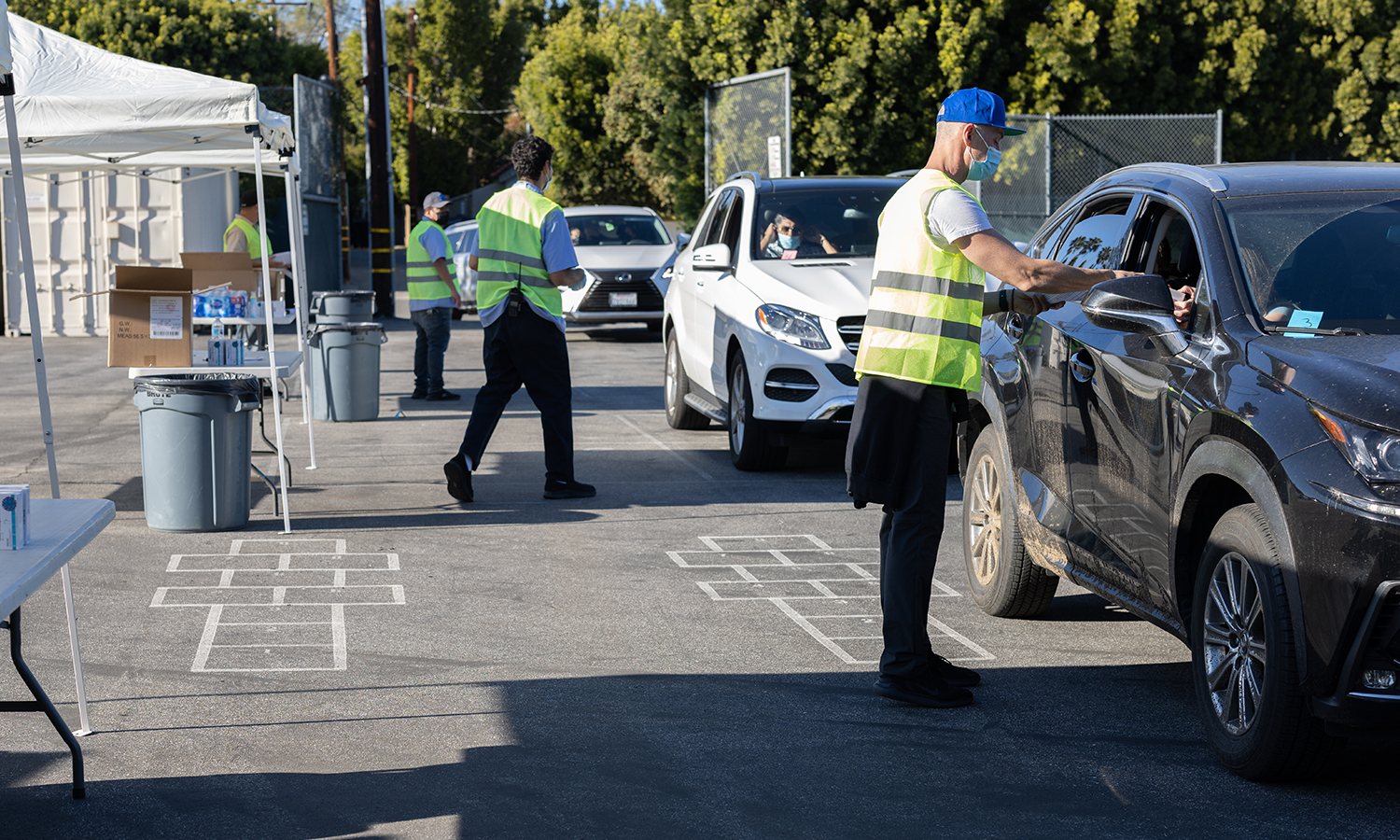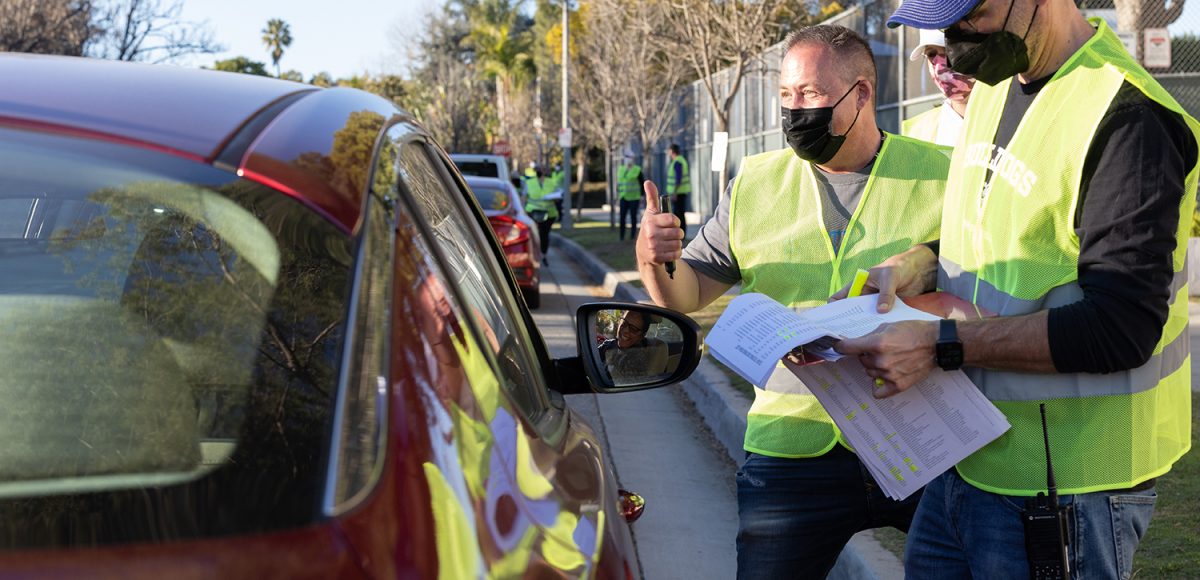Students, teachers, and staff in the Beverly Hills Unified School District (BHUSD) returned to classrooms on Jan. 10 for the spring semester – at least most of them. Amid record breaking case numbers driven by the highly infectious omicron variant, over 200 students and 40 staff tested positive for COVID-19. Many of the active infections were caught in the dragnet of an ambitious district-wide day of testing administered at Hawthorne Elementary School.
“The magnitude of the Omicron variant and the impact it is having on learning cannot be understated. Although we are confident in our ability to pivot, the number of students in quarantine is unlike anything we have experienced without transitioning the entire school to Distance Learning,” BHUSD Superintendent Dr. Michael Bregy said in a statement.
The district saw early warning signs about the variant in the last days of the fall semester. By the start of winter break on Dec. 21, the district reported 40 infections among students and 12 among staff. School board members told the Courier that the district might have to consider testing each student prior to the resumption of learning.
On the morning of Jan. 9, the Sunday before classes, administrators, teachers, and staff marshaled at Hawthorne with more than 9,000 rapid antigen COVID-19 tests. In addition to testing each of the district’s 3,300 students and roughly 750 staff, the district distributed tests to household members accompanying students in the same car.

Guests who came to the testing first checked in with an official on Rexford Drive to verify the enrollment status of students. The district told the Courier that a number of individuals without students in the district attempted to secure tests but were turned away. Then, cars made their way onto Elevado Avenue and into the Hawthorne parking lot, where the district had erected a field office to distribute tests and log results as they came in. After getting the tests, the guests parked on the surrounding streets to self-administer them.
For many staff and faculty assisting in the process, the day became an enjoyable “soft open” for the spring term. “It’s been really nice to see families that we taught a long time ago and have been in the district for a long time,” Hawthorne Principal Sarah Kaber told the Courier. “It’s been a really nice day actually.”
Parents largely expressed gratitude for the service and its execution, with wait times often taking less than five minutes.
“I thought it would be a mess [with] cars waiting in line. It’s really fast. I’m really surprised,” said one parent named Sarah who declined to give her last name.
But allowing parents and students to administer the tests themselves also seemed to open the tests up to wider margins of human error. The Courier observed some younger students struggle with the dense instructions. Remus “RJ” Johnson, a long-time security guard at Hawthorne, told the Courier that he helped some families whose first language was not English.

“Some parents, they cannot read English,” said the college-age cousin of two BHUSD students who drove his cousins to the testing site and asked for anonymity to speak candidly. “They’re foreign. How can they do it?”
The testing protocols instituted by the district acknowledged the limitations of the rapid antigen tests, which are less reliable than polymerase chain reaction (PCR) tests. Those with positive test results were then directed to the district office for a second antigen test. If that one also returned a positive, the individual was considered an active case. If, however, the second test came back negative, one of the district’s COVID-19 testing contractors would administer PCR test, the results of which determined the person’s status.
At a time of nationwide testing shortages, “the challenge was securing tests,” School Board President Mary Wells told the Courier. The district placed an order for tests with the Los Angeles County Department of Public Health (Public Health), but suspecting that demand might outstrip supply, district officials worked with existing contractors to acquire antigen tests of their own. By Jan. 9, the district still had not received any tests from Public Health, officials said.
The district had a contingency plan for families who did not attend the Jan. 9
drive- thru. On Jan. 10, in conjunction with the city and police department, the district shut down Rexford Drive along the Civic Center for a second drive-thru event.
In a demonstration of omicron’s virulence, the district shared that “numerous people who tested negative” on Jan. 9 developed symptoms afterwards and tested positive the next day.
The district reported the results of its own testing along with tests administered separately on Jan. 11, which showed 39 active cases among staff and 159 among students, by far the largest number of cases since the start of the pandemic. By Jan. 13, the case numbers had risen to 48 and 219, respectively.
All of the nearly 270 infected students and staff will have isolate at home for at least five days. On the fifth day, if they no longer show symptoms, they may return to class with a negative antigen test.
In an abundance of caution, the district has instituted a new policy for this latest wave whereby the siblings of infected students are assumed to be positive as well. They, too, must isolate for the minimum five days. Isolating students can attend class via Zoom.







